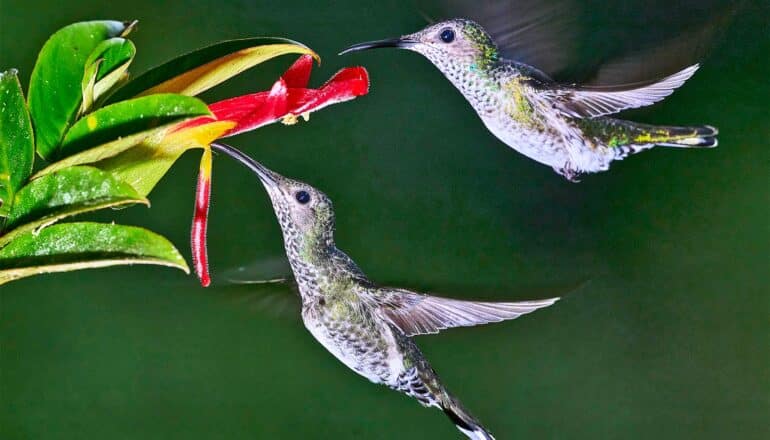Female hummingbirds mimic males to avoid harassment

Tailoring a look to receive or evade certain attention is common among people, and, according to a recent study, it turns out hummingbirds do it, too.
It has been known for some time that some, but not all, females in the white-necked jacobin hummingbird take on the bright colors used by males. The reason why has been somewhat of a mystery.
Using a game-theoretic model of hummingbird behavior developed by researchers including Carnegie Mellon University’s Kevin Zollman and previously published data, a team has finally explained why.
“In these hummingbirds, females want to mimic males. If they all did that, then they would end up being disbelieved. So, they end up settling into an equilibrium where some of them ‘lie,’ and they are sometimes ‘believed,’” says Zollman, a coauthor of the study and director of CMU’s Institute for Complex Social Dynamics.
This study supports the theory that the colorful females are mimicking males, resulting in reduced aggression from other hummingbirds and increased access to nectar resources. This mimicry is a mechanism by which the female polymorphism could persist in white-necked jacobins and other hummingbird species.
This kind of documentation of hybrid equilibria—an equilibrium that can occur when signalers may be dishonest—in nature is rare. Using previously collected behavioral data, the researchers detail a game-theoretic model based on the natural history of hummingbirds. Their findings show that hybrid signals likely exist in nature and the need for greater diversity of models to explain stable communication.
This study builds on previous research from Zollman on honesty between animals.
“Besides demonstrating the hybrid equilibrium in this species, the model also gives us predictions for when we might see other patterns related to sex. For example, when we might find completely different females and males, or when they should look completely the same,” says Jay J. Falk, lead author of the study and postdoctoral scholar at University of Washington.
“I’m very excited to test out some of these broader predictions of this model in the real world.”
The research appears in Animal Behaviour.
Support for this work came from the National Science Foundation Postdoctoral Research Fellowship in Biology Grant as well as the Walt Halperin Endowed Professorship and the Washington Research Foundation as Distinguished Investigator.
Source: Carnegie Mellon University
The post Female hummingbirds mimic males to avoid harassment appeared first on Futurity.
